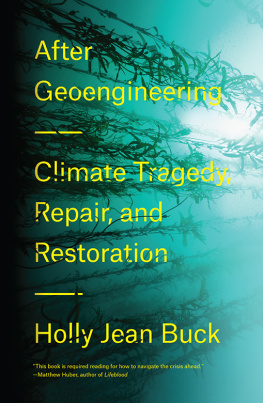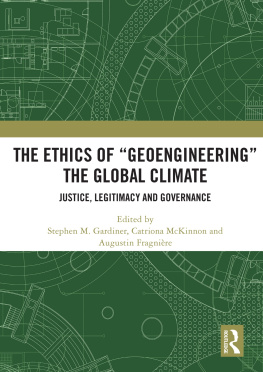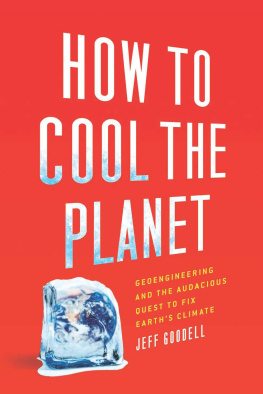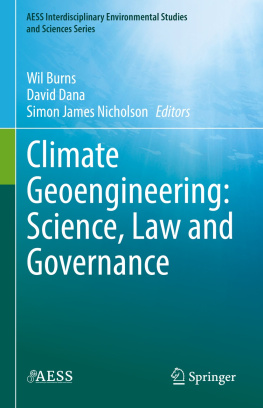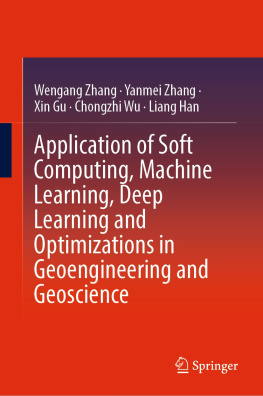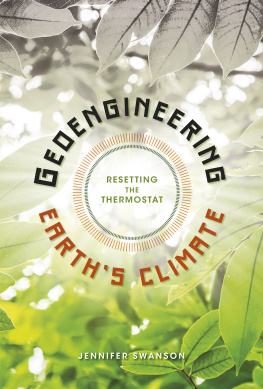Contents

After Geoengineering
After
Geoengineering
Climate Tragedy,
Repair, and Restoration
Holly Jean Buck

First published by Verso 2019
Holly Jean Buck 2019
All rights reserved
The moral rights of the author have been asserted
1 3 5 7 9 10 8 6 4 2
Verso
UK: 6 Meard Street, London W1F 0EG
US: 20 Jay Street, Suite 1010, Brooklyn, NY 11201
versobooks.com
Verso is the imprint of New Left Books
ISBN-13: 978-1-78873-036-5
ISBN-13: 978-1-78663-799-4 (UK EBK)
ISBN-13: 978-1-78873-038-9 (US EBK)
British Library Cataloguing in Publication Data
A catalogue record for this book is available from the British Library
Library of Congress Cataloging-in-Publication Data
A catalog record for this book is available from the Library of Congress
Typeset in Fournier by MJ & N Gavan, Truro, Cornwall
Printed and bound by CPI Group (UK) Ltd, Croydon, CR0 4YY
Contents
D ecember in California at one degree of warming: ash motes float lazily through the afternoon light as distant wildfires rage. This smoky winter follows a brutal autumn at one degree of warming: a wayward hurricane roared toward Ireland, while Puerto Ricos grid, lashed by winds, remains dark. This winter, the stratospheric winds break down. The polar jet splits and warps, shoving cold air into the middle of the United States. Then, summer again: drought grips Europe, forests in Sweden are burning, the Rhine is drying up. And so on.
One degree of warming has already revealed itself to be about more than just elevated temperatures. Wild variability is the new normal. Atmospheric patterns get stuck in place, creating multi-week spells of weather that are out of place. Megafires and extreme events are also the new normalor the new abnormal, as Jerry Brown, Californias former governor, put it. One degree is more than one unit of measurement. One degree is about the uncanny, and the unfamiliar.
If this is one degree, what will three degrees be like? Four?
At some pointmaybe it will be two, or three, or four degrees of warmingpeople will lose hope in the capacity of current emissions-reduction measures to avert climate upheaval. On one hand, there is a personal threshold at which one loses hope: many of the climate scientists I know are there already. But theres also a societal threshold: a turning point, after which the collective discourse of ambition will slip into something else. A shift of narrative. Voices that say, Lets be realistic; were not going to make it. Whatever making it means: perhaps limiting warming to 2C, or 1.5, as the Paris Agreement urged the world to strive for. There will be a moment where we, in some kind of implied community, decide that something else must be tried. Where we say: Okay, its too late. We didnt try our best, and now we are in that bad future. Then, there will be grappling for something that can be done.
This is the point where it becomes necessary to consider the future we didnt want: solar geoengineering. People will talk about changing how we live, from diet to consumption to transportation; but by then, the geophysics of the system will no longer be on our side. A specter rears its head: the idea of injecting aerosols into the stratosphere to block incoming sunlight. The vision is one of shielding ourselves in a haze of intentional pollution, a security blanket that now seems safer than the alternative. This discussion, while not an absolute given, seems plausible, if not probable, from the vantage point of one degree of warmingespecially given that emissions are still rising.
You may have heard something about solar geoengineering. Its been skulking in the shadows of climate policy for a decade, and haunting science for longer than that, even though its still just a rough idea. But it is unlikely you imagined solar geoengineering would be a serious topic of discussion, because it sounds too crazychange the reflectivity of the earth to send more sunlight back out into space? Indeed, it is a drastic idea.
We are fortunate to have rays of sunlight streaming through space and hitting the atmospheric borders of our planet at a solar constant of about 1,360 watts per square meter (W/m2) where the planet is directly facing the sun. This solar constant is our greatest resource; a foundation of life on earth. In fact, its not actually so constantit was named before people were able to measure it from space. The solar constant varies during the year, day to day, even minute to minute. Nevertheless, this incoming solar energy is one of the few things in life we can count on.
Much of this sunlight does not reach the surface; about 30 percent Still, this 180 W/m2 is a bounty.
The point of reciting all these numbers is this: solar geoengineering amounts to an effort to change this math. Thats how a researcher might look at it, anyway.
From one perspective, it sounds like complete lunacy to intentionally mess with something as fundamental as incoming solar radiation. The sun, after all, has been worshipped by cultures around the world: countless prayers uttered to Ra, Helios, Sol, Bel, Surya, Amaterasu, and countless other solar deities throughout the ages. Today, many still celebrate holidays descended from solar worship. And that worship makes sensewithout the sun, there would be nothing. Even in late capitalism, we valorize the sun: people search for living spaces with great natural light; they get suntans; they create tourist destinations with marketing based on the sun and bring entire populations to them via aircraft. Changing the way sunlight reaches us and all other life on earth is almost unimaginably drastic.
But there are ways of talking about solar geoengineering that normalize it, that make you forget the thing being discussed is sunlight itself. The most discussed method of solar geoengineering is stratospheric aerosol injectionthat is, putting particles into the stratosphere, a layer of the atmosphere higher than planes normally fly. These particles would block some fraction of incoming sunlight, perhaps about 1 to 2 percent of it. Stratospheric aerosols would change not only the amount of light coming down, but also the type: the light would be more diffuse, scattering differently. These changes would alter the color of our skies, whitening them to a degree that may or may not be easily perceptible, depending on whether you live in an urban area. The distortion would also affect how plants and phytoplankton operate. Certainly, this type of intervention seems extreme.
And despite the extremity of the idea, its not straightforwardly irrational. First of all, solar radiation is already naturally variable; a single passing cloud can change the flux by 25 W/m2.
So, from another perspective, because human activity is already messing with the balance of radiation through both greenhouse gas emissions (warming) and emitting particulate matter from industry and vehicles (cooling), it doesnt sound as absurd to entertain the idea that another tweak might not be that significantespecially if the counterfactual scenario is extreme climate suffering. If you stretch your imagination, you can picture a future scenario where it could be more outrageous not to talk about this idea.
The question is, are we at the pointlets call it the shiftwhere it is worth talking about more radical or extreme measuressuch as removing carbon from the atmosphere, leaving oil in the ground, social and cultural change, radical adaptation, or even solar geoengineering?


